
Find out how much it costs to refinish your porcelain sink and the factors that influence the final price to make it look like new, including size, type, and labor.
Bathtub restoration costs depend on your project and location. Check with a local pro for your specific job.
Refinishing a tub can extend its lifespan, fix simple issues, and improve the overall appearance of your bathroom.
Reglazing your bathtub is a cost-effective way to revamp your space, costing about 25% of the price of installing a new bathtub.
Freestanding tubs will be more expensive to refinish because there is more surface area to cover, which means more materials and higher labor costs.
If your tub has major cracks or scratches, it may make more financial sense to replace it altogether.
Refinishing or reglazing a tub will give it a fresh, clean look that will surely add a "wow" factor to your bathroom. Bathtub refinishing costs $483 on average, but can reach up to $1,000 depending on the method you choose and your bathtub material.
If you’re handy, you may be able to refinish or reglaze your bathtub yourself. This guide will help you understand the typical factors involved in a bathtub refinishing and reglazing job and what you can do to cut down on costs.
Even though the actual process of refinishing your bathtub can sound quite simple, it’s important to take note of all the options available before making a final decision.
The type of tub matters when budgeting for a refinishing job. Generally, there are four main types of tubs: fiberglass, porcelain, cast iron, and enamel. Here’s a breakdown of bathtub refinishing costs based on tub material:
| Tub Material | Average Cost |
|---|---|
| Fiberglass | $300–$1,000 |
| Porcelain | $350–$600 |
| Antique porcelain | $500–$1,200 |
| Cast iron | $350–$600 |
| Enamel | $350–$600 |
A fiberglass tub is typically the most expensive to refinish, ranging from $300 to $1,000. Fiberglass is more finicky than other materials and may require extra care. It may also take longer to do this job due to the extra effort needed to get the desired smooth finish.
The range for a porcelain tub reglazing is $350 to $600. Usually, it's just a thin layer of porcelain over cast iron or steel. If it's an older tub that is entirely porcelain, you'll need to hire a professional to give it special care, especially if it’s an antique. Also, as beautiful as they are, antique porcelain claw-foot tubs come with a heftier price tag, ranging from $500 to $1,200 to refinish.
Like a porcelain tub, it costs about $350 to $600 to refinish a cast-iron tub. Before fiberglass tubs, cast iron was the standard tub material. A cast-iron tub can last 100 years or more with proper care and maintenance.
Unlike the above materials, enamel is not used to make bathtubs. It is a type of coating that is made from either porcelain or a hard glass coating. Typically, this coating is found on steel and cast-iron tubs. Refinishing costs for an enamel coating can run between $350 and $600.
Your type of bathtub plays a factor in the overall cost. A general rule of thumb is the more surface area a tub has, the higher the bathtub resurfacing costs will be. Here’s how costs might differ between claw-foot tubs and tub-shower combinations:
| Type of Bathtub | Average Cost |
|---|---|
| Claw-foot tub | $400–$1,400 |
| Tub-shower combination | $600–$1,000 |
Inset tubs are the least expensive to refinish because they only have one exterior side, but shower tubs are more expensive due to the wall surface area. Freestanding and claw-foot bathtubs are the most costly due to their deeper interior size and exterior surface area.
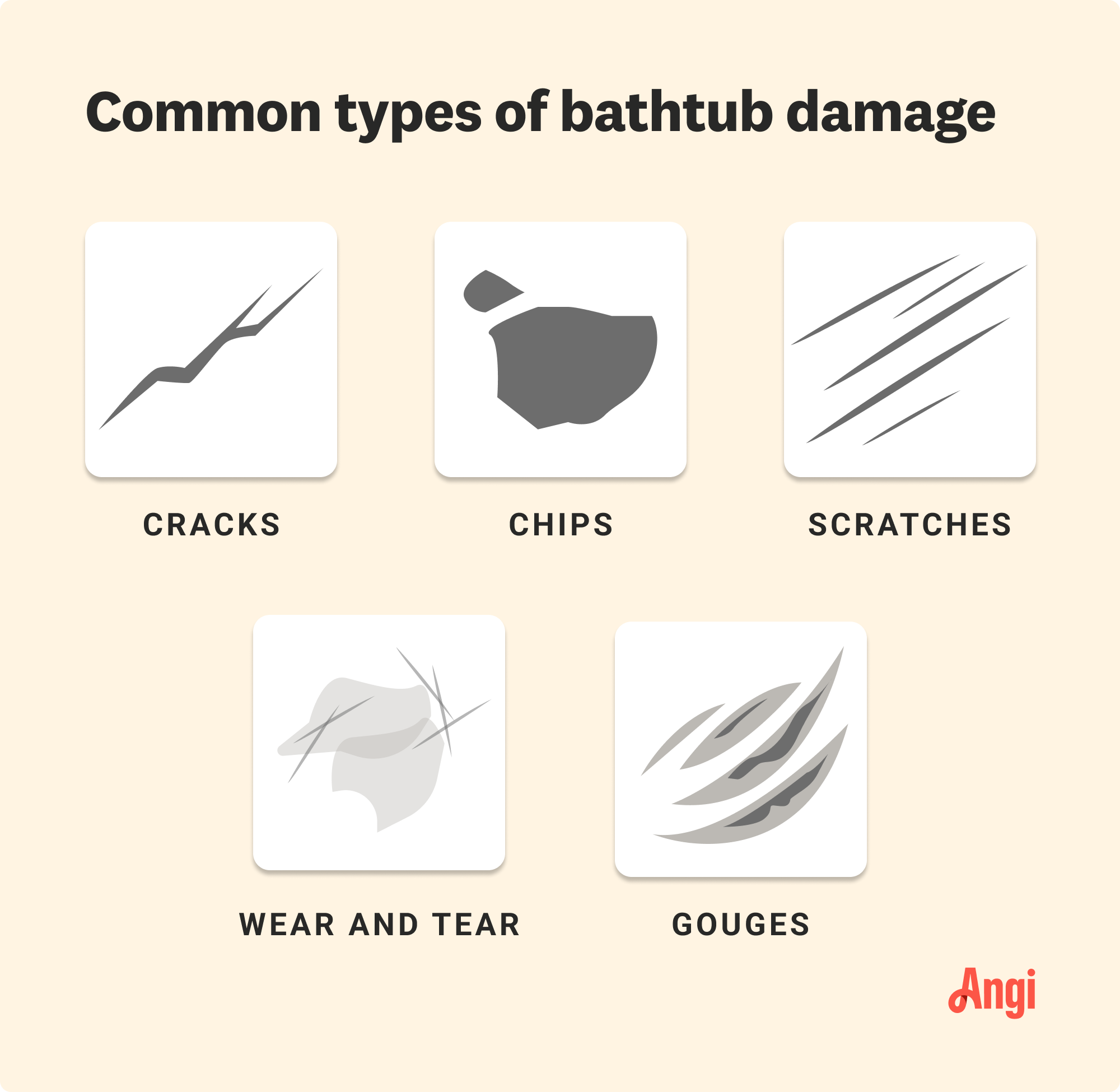
If your tub only has minor things that need to be fixed—like a few small chips or scratches or just general wear and tear—you can expect to pay on the lower side of the average for your tub size and material. However, if you have major cracks, scratches, or even gouges, these will need to be filled, which can increase the overall price.
The method of bathtub refinishing you choose will significantly impact the cost. For example, installing a bathtub liner costs $2,700 to $10,200. Choose the best plan for your tub by considering the overall cost and the longevity of the repair. Here are the key differences between a bathtub inlay, bathtub reglazing, and a bathtub liner:
| Bathtub Inlay | Bathtub Reglazing | Bathtub Liner |
|---|---|---|
| $100–$200 | $280–$600 | $2,700–$10,200 |
| Covers the bottom of the tub only | Chemicals include dangerous fumes | Can grow mildew if not fitted correctly |
| Best for small chips or cracks | Best for cracks, rust, and chips | Best option if your tub is beyond repair |
| Can be installed in as little as 30 minutes | Can take two to five hours to install | Installs take one to two days |
| Permanent | Lasts 10 to 15 years | Lasts three to five years |
The cost of materials will vary depending on the refinishing method you choose. If you decide to go with a liner or inlay, your cost of materials will depend on your tub's size and shape. If you decide to reglaze your tub, the necessary materials include chemicals and additional tools.
The good thing about refinishing your bathtub is that the job takes a relatively short amount of time, so labor costs aren’t too high. Reglazing your bathtub surfaces takes about three to five hours.
Resurfacing can save you a lot of money, but consider replacing your existing tub if it’s cracked or severely damaged. Replacing a bathtub costs an average of $5,700 and could cost as much as $14,700. Here are the average costs of replacing a bathtub, based on the tub style:
| Tub Style | Average Cost (New Tub Only) |
|---|---|
| Standard | $200–$800 |
| Soaking Tub | $600–$13,000 |
| Jet | $1,000–$4,000 |
| Freestanding | $2,000–$3,000 |
| Walk-in | $2,000–$8,000 |
| Accessible | $4,000–$12,000 |
| Clawfoot | $10,000+ |
A few key signs indicate that refinishing your bathtub is a good idea, some more subtle than others.
Rust stains: Rust means the enamel or surface sealer is wearing down, and later can chip and leave sharp edges.
Chips: While small at first, chips can grow over time—and if you have a cast-iron tub, they can lead to rusting.
Discoloration: It’s normal for bathtubs to become discolored with age and use. While this inherently doesn’t cause any concern, it might be unsightly, especially if you plan to sell your home.
Dirty surface: If you just can’t keep your tub as clean as you used to, it’s most likely due to the glaze breaking down. Over time, the glaze can allow dirt and contaminants to enter and seep below the coating.
Refinishing a bathtub involves buffing out surface flaws, stripping the original finish, filling in any cracks or gaps, and applying a new finish (called glaze) to improve the overall look of the tub. Refinishing costs about $450 on average, depending on the type of tub you have.
Reglazing is the process of applying a glazing substance that becomes the very top layer of your tub. Your tub is sanded, chips are filled in, and a new surface coating is applied. Reglazing costs between $280 and $600.
Here are the differences between bathtub refinishing and bathtub reglazing:
| Bathtub Refinishing | Bathtub Reglazing |
|---|---|
| Costs less than tub replacement but more than simple reglazing | Up to 75% less costly than a full bathtub replacement |
| Includes the reglazing process | Lasts between 10 and 15 years |
| Can take between one to three days to complete | Ready to use after 48 hours post-completion |
| Fixes chips, cracks, rust, and discoloration | Many color options to choose from |
| Suitable for heavily damaged tubs | Surface-level treatment |
Whether you’re looking to upgrade your bathroom or simply want to preserve the appearance and life of the bathtub, choosing to refinish your existing tub has its advantages.
Cost: If you want to make your bathtub look new, refinishing it is significantly more cost-effective than replacing it.
Lead protection: Older bathtubs can contain lead. Refinishing can put a new protective surface on your bathtub, making it safer for you and your family.
Preservation: Refinishing your bathtub is an easy way to extend its life by eliminating rust, cracks, and scratches.
Aesthetics: You can change the whole look of your tub just by refinishing it. This can make your entire bathroom look fresh and updated, and you can even change the tub's color.

Skill and precision are key to flawless bathtub refinishing results. Hiring a local bathtub refinishing pro ensures your tub’s surface is even, durable, and free of drips, bubbles, or peeling.
Bathtub refinishing involves chemicals, ventilation, and precise surface prep, which the pros can pull off flawlessly. Here’s why you should hire an expert:
Pros know how to sand, clean, and prime tub surfaces for a smooth, long-lasting finish.
Hiring a pro eliminates the risk of streaking, bubbling, or peeling finishes caused by uneven application.
Refinishers have proper ventilation systems and protective gear to handle strong chemical fumes safely.
DIYers can buy bathtub refinishing kits for between $30 and $150, but any missteps can yield less-than-perfect results.
Cleaning and drying the tub thoroughly before the refinishing work begins
Removing caulk or hardware around the bathtub to make the job easier for your contractor
Touching up small chips or scratches with a repair kit before hiring a pro for full refinishing
Painting or updating bathroom accessories once the refinishing is complete.
Note your tub’s material type (fiberglass, cast iron, or porcelain) so your contractor can choose the right refinishing products.
Clarify your color choices, finish types (matte or glossy), and job timeline with your refinishing pro.
Discuss repair options for chips, rust, or cracks before refinishing begins.
Choose a standard color: Specialty or custom colors will almost always increase the bottom line. Consider picking a color that's readily available to avoid spending extra money.
Take your time: While you might feel tempted to complete the project as soon as possible, carefully weighing your options can save you from redoing the project later.
Talk to your contractor: You might be able to save money in the long run by asking your contractor about other services they provide. If you are in the position to upgrade your whole bathroom, they might be able to bundle other services like installing new vanities or a new backsplash.
Home is the most important place on earth, which is why Angi has helped more than 150 million homeowners transform their houses into homes they adore. To help homeowners with their next project, Angi provides readers with the most accurate cost data and upholds strict editorial standards. We’ve surveyed thousands of real Angi customers about their project costs to develop the pricing data you see, so you can make the best decisions for you and your home. We pair this data with research from reputable sources, including the U.S. Bureau of Labor Statistics, academic journals, market studies, and interviews with industry experts—all to ensure our prices reflect real-world projects.
Want to help us improve our cost data? Send us a recent project quote to [email protected]. Quotes and personal information will not be shared publicly.
From average costs to expert advice, get all the answers you need to get your job done.

Find out how much it costs to refinish your porcelain sink and the factors that influence the final price to make it look like new, including size, type, and labor.

Whether upgrading to a new tub or replacing an old tub with a shower, you’ll need to know how to remove a bathtub to make room.
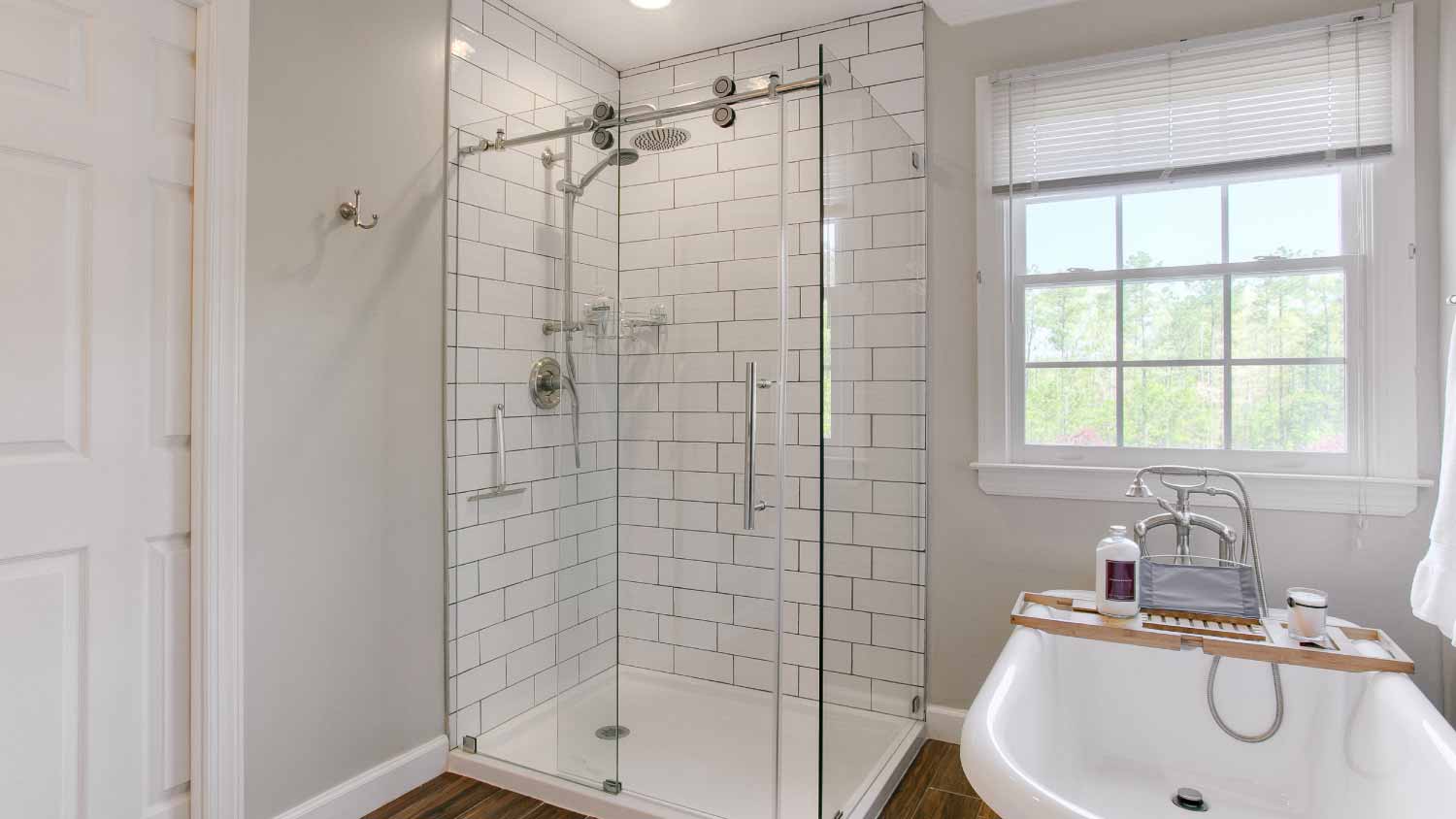
If you’re installing or replacing your shower doors, you’ll be working with a glass installation pro. Here are the most common shower door questions for this project.
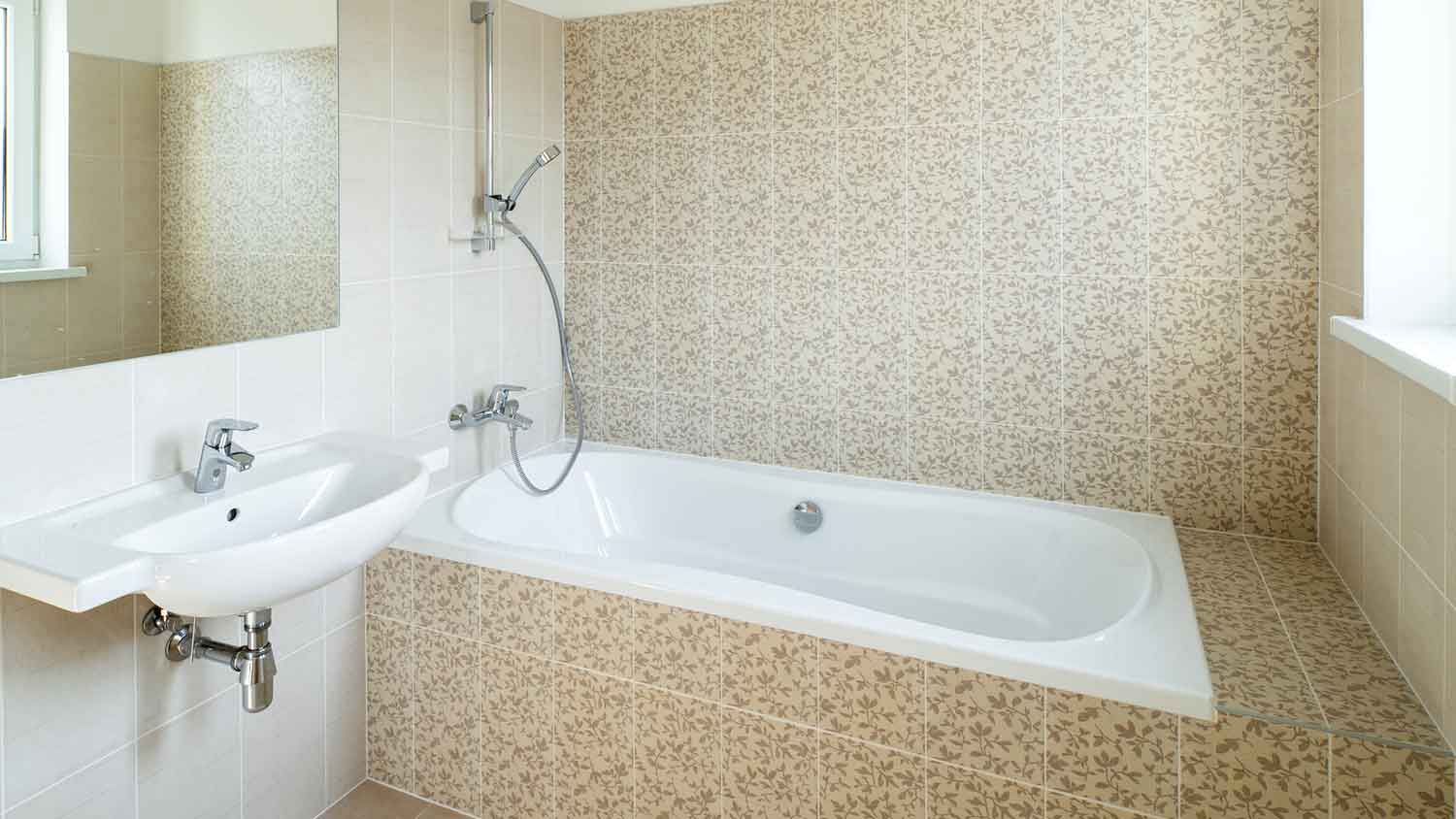
The short answer is yes, you can paint a fiberglass tub. But you need the right preparation and paint to transform your bathtub successfully.
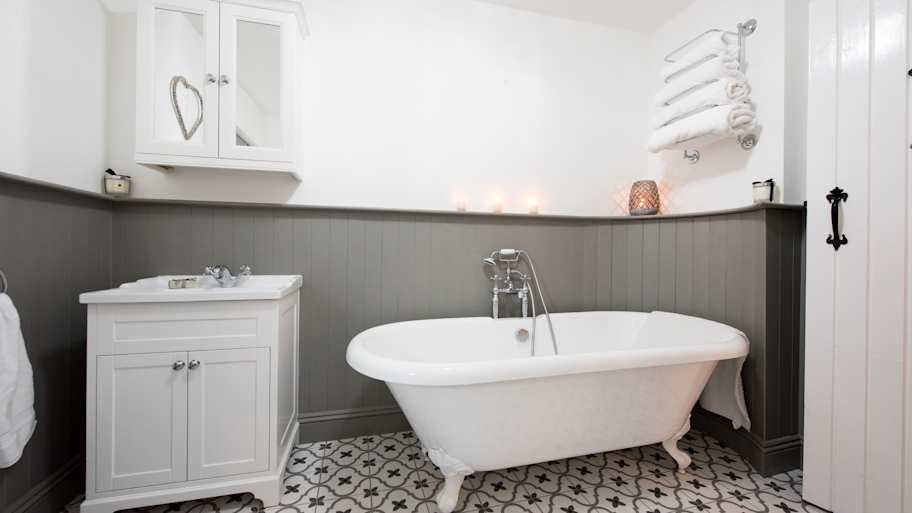
Weighing the pros and cons of freestanding bathtubs? Learn the good, the bad, and the costs to decide which bathtub best fits your bathroom and budget.
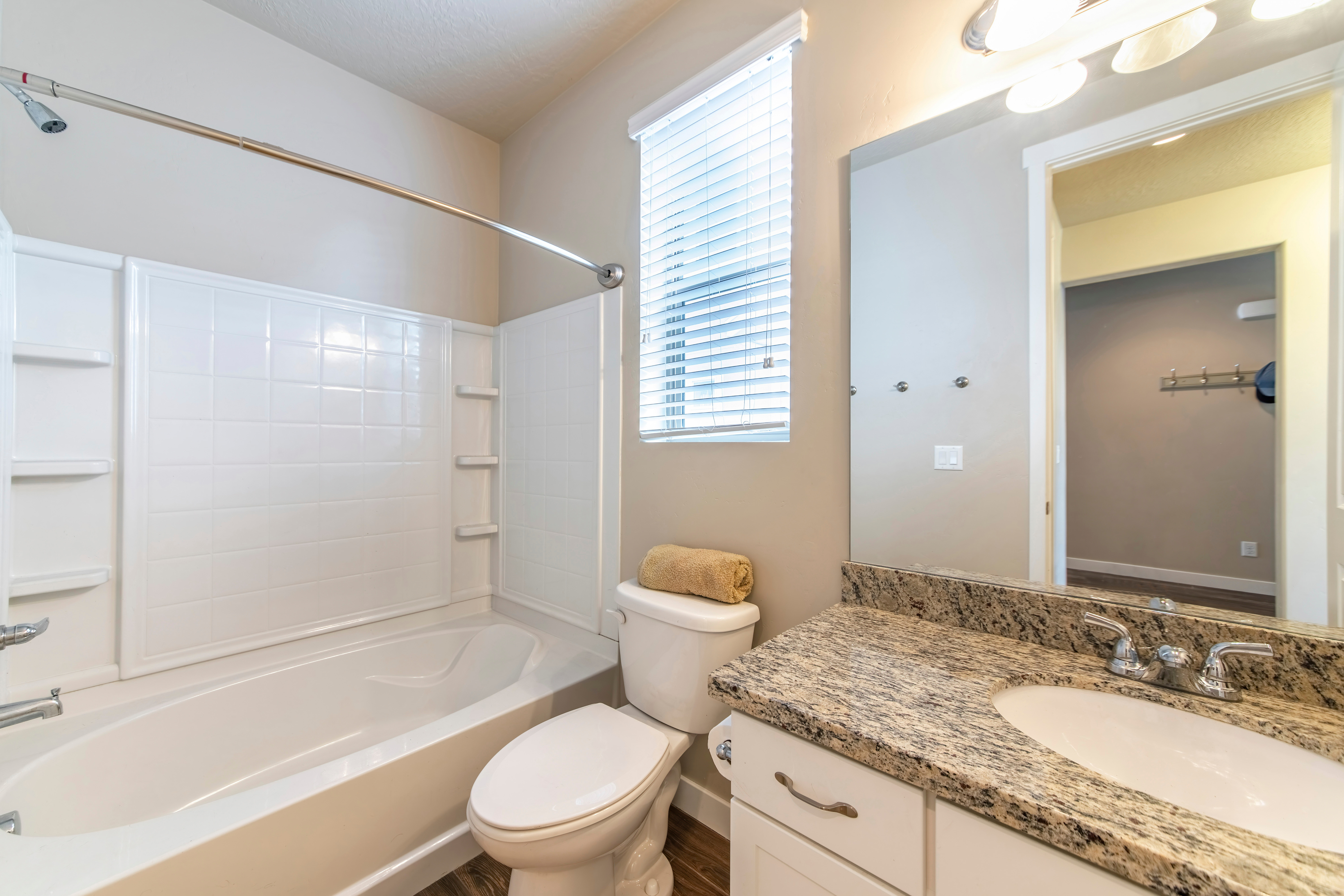
Acrylic bathtubs are a common go-to, but are they right for your bathroom remodel? This guide breaks down the pros and cons of acrylic tubs.